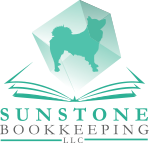“I have no idea on how financially healthy my business is. Where do I start?”
You love running your business, but maybe your understanding of the finances is focused on checking the bank account to make sure there’s enough in there to pay the bills and that your customers have paid you. But cash in the bank is only one way to see how your business is doing. You need to know what your business has, what your business owes, how your business is performing and how the cash is flowing.
In this short blog series, I’ll explain three basic yet vital financial statements: the Balance Sheet, the Income Statement, and the Statement of Cash Flows.
The Balance Sheet
The balance sheet shows you what your business owns, how much your business owes to others, and how much of the business you can claim as an owner.
• The things your business owns are called ASSETS. Assets include the cash in the bank accounts, inventory for sale, major equipment and buildings bought for the business, plus intangibles like trademarks and internet domain names.
• The money your business owes to other entities is called LIABILITIES. Liabilities include business loans, credit card balances and expenses owed at a future date (like sales tax or income tax).
• EQUITY is the difference between ASSETS and LIABILITIES. This amount represents how much of the business can claim as owner.
Here is an example of a balance sheet:
| My Company | ||||||
| Balance Sheet | ||||||
| As of 30 June 20XX | ||||||
| ASSETS | LIABILITIES | |||||
| Cash in First American Bank | $10,000 | Business credit card from Northern Bank | $15,000 | |||
| Company car | $15,000 | Loan from ABC Bank | $75,000 | |||
| Office building | $100,000 | |||||
| Web domain | $5,000 | TOTAL LIABILITIES | $90,000 | |||
| EQUITY | ||||||
| Owner’s Contribution | $40,000 | |||||
| TOTAL EQUITY | $40,000 | |||||
| TOTAL ASSETS | $130,000 | TOTAL LIABILITIES & EQUITY | $130,000 | |||
Did you notice that Total Assets equals Total Liabilities & Equity? That’s where the “balance” comes in. Assets are brought into the business by either the owner (Equity) or loans (Liabilities).
Did you also notice that the balance sheet date has the phrase “As of” before it? That’s because the balance sheet only shows figures for a single date. You can see how the finances have changed over a period of time by comparing one or more balance sheets, but each one will only reflect the Assets, Liabilities and Equity for one day.
In a nutshell, the Balance Sheet shows you a quick snapshot of what you own and how you paid for it. It’s a crucial piece of assessing the business’s financial status, but only how the finances are for a fixed point in time. The next post in the series will highlight the Income Statement, which shows your business’s profit margin.
Any questions? Comment below or send me an email!
